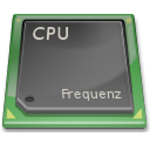Code Editor APK (Premium Mod)
Mod Info:
- Premium / Paid features unlocked;
- Disabled / Removed unwanted Permissions + Receivers + Providers + Services;
- Optimized and zipaligned graphics and cleaned resources for fast load;
- Ads Permissions / Services / Providers removed from AndroidManifest;
- Ads links removed and invokes methods nullified;
- Ads layouts visibility disabled;
- Google Drive broken;
- Google Play Store install package check disabled;
- Debug code removed;
- Remove default .source tags name of the corresponding java files;
- Analytics / Crashlytics / Firebase disabled;
- No active trackers or advertisements;
- Languages: Full Multi Languages;
- CPUs: universal architecture;
- Screen DPIs: 120dpi, 160dpi, 240dpi, 320dpi, 480dpi, 640dpi;
- Original package signature changed;
- Release by Balatan.
Description
In today’s digital era, software development has become an integral part of our lives. From building web applications to creating mobile apps, developers rely on powerful tools to write, edit, and debug their code efficiently. One such indispensable tool is a code editor. A code editor is a software application that provides developers with a dedicated environment for writing and editing their code. It offers a range of features and functionalities that enhance productivity and streamline the development process. In this article, we will explore the key aspects of a code editor and understand why it is a crucial component for developers.
What is a Code Editor?
A code editor is a specialized software application designed to facilitate the writing, editing, and management of source code. It provides a dedicated environment with features like syntax highlighting, code completion, and error checking, which help developers write code more efficiently and reduce common mistakes. Code editors are typically lightweight and fast, allowing developers to work seamlessly on projects of all sizes.
Features of a Code Editor
a. Syntax Highlighting
One of the fundamental features of a code editor is syntax highlighting. It colorizes different elements of the code based on their purpose, making it easier for developers to visually distinguish between keywords, variables, comments, and other code components. This feature significantly improves code readability and comprehension.
b. Code Completion
Code editors often include an intelligent code completion feature that suggests possible code snippets or auto-completes code as developers type. This functionality saves time and reduces errors by providing suggestions based on the context and the programming language being used.
c. Error Detection and Debugging
A code editor helps developers identify errors in their code by highlighting syntax errors, missing brackets, or other common mistakes. Some advanced code editors even offer integrated debugging tools, allowing developers to step through their code and track down bugs more efficiently.
d. Version Control Integration
Many code editors come with built-in support for popular version control systems like Git. This integration allows developers to manage their code repositories, track changes, and collaborate with other team members seamlessly.
e. Customization and Extensibility
Code editors often provide customization options, allowing developers to personalize their editing environment according to their preferences. They also support the installation of extensions or plugins, which can enhance the editor’s capabilities by adding new features or language support.
Types of Code Editors
a. Text Editors
These are basic code editors that provide essential functionalities like syntax highlighting and code completion. Examples include Notepad++, Sublime Text, and Atom. Text editors are lightweight and suitable for simple coding tasks.
b. Integrated Development Environments (IDEs)
IDEs are feature-rich code editors that offer a comprehensive suite of tools for software development. They typically include features like code debugging, project management, and extensive language support. Examples of popular IDEs include Visual Studio, Eclipse, and JetBrains IntelliJ IDEA.
Choosing the Right Code Editor
Selecting the right code editor depends on factors such as personal preferences, project requirements, and the programming language being used. Developers should consider the editor’s performance, ease of use, available features, and community support when making their choice.
Conclusion
In conclusion, a code editor is an essential tool for developers, providing a dedicated environment for writing, editing, and managing code. Its features and functionalities significantly improve productivity, code quality, and collaboration. Whether using a simple text editor or a feature-rich IDE, choosing the right code editor is crucial for developers to maximize their efficiency and effectiveness in the software development process.
What's new
✓ Resolved persistent URL permissions issue.
✓ Minor bug fixes and stability improvements.










